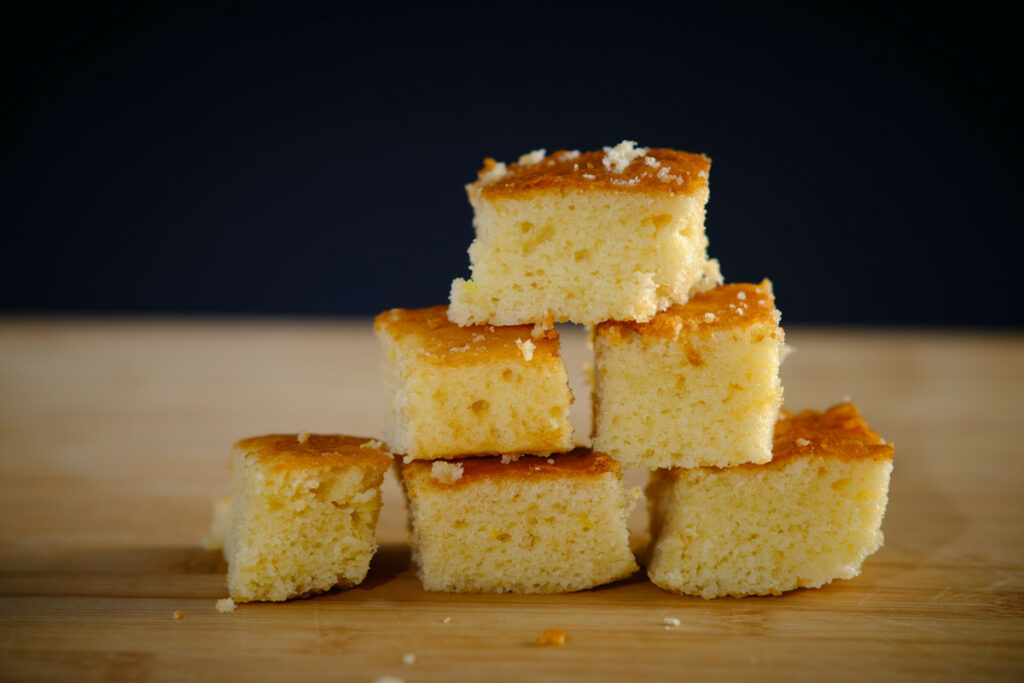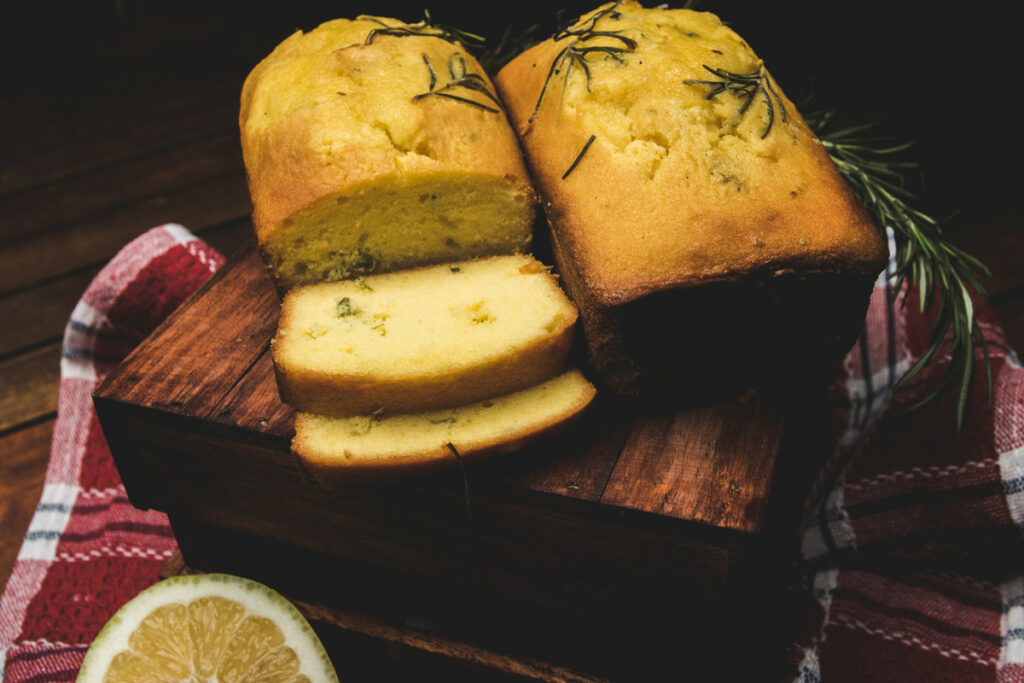
I didn’t set out to see if cornbread freezes well, I just needed space for Thanksgiving leftovers. My aunt’s legendary cornbread ended up in the freezer out of pure desperation, wrapped in whatever I could find.
Weeks later, I pulled it out, reheated it, and honestly? It tasted almost fresh. That’s when I realized freezing cornbread isn’t just doable, it actually works, as long as you do it right.
Why Cornbread Actually Freezes Better Than You’d Think

After that first Thanksgiving experiment, I’ve frozen cornbread a few more times, and honestly, it keeps holding up. The texture doesn’t fall apart, the flavor stays rich, and when you reheat it the right way, it’s almost as good as fresh.
So I got curious: why does it actually freeze so well?
Turns out, it’s the fat. Cornbread usually has a good amount of butter, oil, or even buttermilk, all of which help lock in moisture and protect the crumb structure during freezing. Unlike lean breads that dry out fast, cornbread has enough fat to act as a built-in moisture barrier.
And I’m not the only one who stumbled into that discovery. Home bakers on Garden Web’s food forum shared similar results, saying they’ve frozen leftover cornbread “without any problem”, as long as it was tightly wrapped in plastic or foil before going into a freezer bag.
That’s exactly what I did (mostly by accident), and it worked like a charm.
So the takeaway? Cornbread isn’t fragile, it’s surprisingly freezer-friendly. The key is keeping the air out and the moisture in.
You Might Like: Can You Freeze Bread?
How I’ve Been Freezing Cornbread (and Actually Making It Work)

The first time I froze cornbread wasn’t some clever kitchen experiment, it was pure survival. I didn’t have fancy freezer bags or airtight containers, just a roll of plastic wrap and too much food.
So, I wrapped the slices over and over (probably five times for no reason other than “seems safe”) and tossed them in the freezer.
Weeks later, I reheated one and, somehow, it worked. The cornbread was still soft, not soggy, and I realized my over-wrapping had accidentally been the perfect protection against freezer burn.
Since then, I’ve tested a few ways to do it properly, and these are the ones that actually keep the cornbread tasting fresh:
1. Cool it completely.
If it’s even a little warm, condensation forms inside the wrap and ruins the texture later. Give it time to cool all the way down.
2. Wrap it tight
Now a couple layers of plastic wrap pressed right against the cornbread, then seal it inside a freezer bag. Same idea, less drama.
Bonus tip:
If your freezer has things like fish, onions, or other “smell risk” foods, add a layer of foil or use a hard-sided freezer container. Cornbread can pick up odors fast, and this extra barrier keeps it tasting like… well, cornbread.
3. Label and date it.
Trust me, three weeks from now “mystery foil thing” won’t ring any bells.
4. Freeze flat.
Lay pieces in a single layer until they’re solid, then stack or store them however you want. Muffins hold up great this way too.
With this setup, cornbread easily lasts up to three months without drying out. I’ve pulled some out at the two-month mark that still tasted like it just came out of the oven, minus the cleanup.
How Long Frozen Cornbread Actually Lasts
If you wrap it right, cornbread freezes surprisingly well, better than I ever expected. Most guides (and my own freezer experiments) agree you’ll get about two to three months before the flavor starts to fade.
After that, it doesn’t go bad exactly, but it starts picking up that faint “freezer” taste and loses some of its soft crumb.
When I first froze my aunt’s leftovers, I pulled them out after almost a month and they were perfect, tender, buttery, no weird aftertaste. Around the three-month mark, though, it started to dry out a little, especially the edges. So, if you’re freezing a batch, try to use it within that window for the best results.
Southern Living and Custom Bakehouse both say the same thing, three months is your sweet spot before quality drops. I can confirm from personal (and hungry) experience, they’re right.
How to Thaw and Reheat Frozen Cornbread
When it’s time to bring your cornbread back to life, you’ve got options. You can thaw it overnight in the fridge or just let it sit on the counter for a few hours, both work fine.
Once it’s defrosted, reheat it low and slow. I usually go with about 300°F in the oven until it’s warmed through and the edges get that soft crunch again. If you’re short on time, the microwave does the job too, just wrap it in a paper towel so it stays moist.
If you want to see which method actually makes it taste closest to fresh, I’ve broken it all down here: How to reheat cornbread the right way.
The Verdict: Should You Freeze Cornbread?
Honestly? Absolutely. It’s not identical to fresh-from-the-oven cornbread, but it’s close, and definitely better than watching it go stale on the counter.
As long as you wrap it tight and don’t forget it in the back of the freezer for six months, it’ll taste like a small victory when you pull it back out.
So yes, freezing cornbread works, and it might just save you from tossing leftovers that deserve better. Because let’s be real: future you, with a bowl of chili or a plate of BBQ, will be very glad you did.